Companion Planting with Geothermal Climate Control
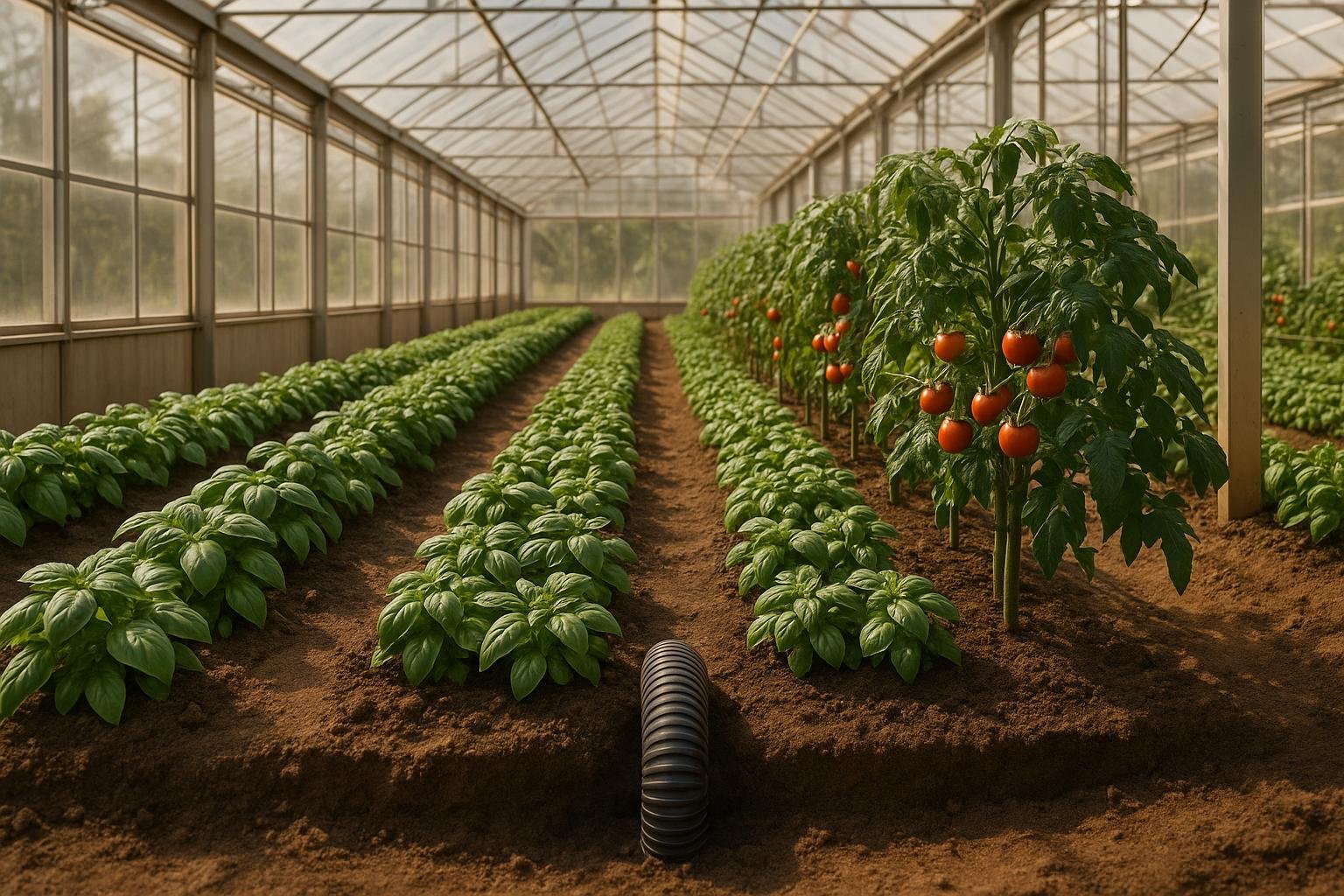
Geothermal climate control uses the Earth's stable underground temperature (around 55°F) to create efficient heating and cooling systems, especially for greenhouses and gardens. This method supports companion planting, where plants with complementary needs grow together, by maintaining consistent soil and air conditions.
Key Takeaways:
- Energy Efficiency: Geothermal systems are 50% more efficient than gas furnaces and cut heating costs by up to 80%.
- Better Plant Growth: Stable temperatures improve nutrient absorption, root development, and beneficial microorganisms.
- Pest Control: Consistent conditions reduce plant stress, helping plants produce natural pest repellents.
- Higher Yields: Controlled climates optimize crop growth and nitrogen mineralization.
- Eco-Friendly: Geothermal reduces emissions by up to 85% compared to fossil fuels.
AI tools like AIGardenPlanner simplify geothermal garden design by analyzing soil, climate, and plant needs, ensuring optimal plant pairings and layouts. While geothermal systems require a high upfront cost ($30,000–$50,000), they offer long-term savings and sustainable gardening solutions.
Geothermal Greenhouse: It worked. It REALLY Worked!

How Geothermal Systems Affect Companion Planting
Geothermal systems create an ideal underground environment for companion plants by maintaining stable root-zone temperatures. This consistent climate acts as a buffer against extreme weather, transforming the conditions in which companion plants thrive. These controlled settings bring notable advantages in temperature regulation, pest management, and crop yields.
Temperature Stability and Plant Growth
Geothermal systems provide a steady environment that shields plant roots from temperature swings, enhancing nutrient uptake and fostering beneficial microorganisms. This is especially important when growing companion plants with different temperature tolerances. Research using the TGRooZ device highlights this impact. For instance, Arabidopsis seedlings exposed to uniform high temperatures of about 90°F (32°C) showed stunted root growth. However, when a temperature gradient was introduced, typical root growth resumed [5].
Similarly, tomato plants exposed to consistently high temperatures of 93°F (34°C) experienced reduced root development. Yet, under the TGRooZ system, both primary and lateral root growth improved [5]. These stable conditions promote soil microorganisms that are essential for the symbiotic relationships of companion planting. For example, tomatoes and basil - a classic pairing - can maintain their beneficial interactions more effectively in such an environment.
Better Pest Control Through Companion Planting
Geothermal systems also enhance pest management by creating predictable growing conditions. With stable temperatures, plants experience less stress, making them less vulnerable to pests. When plants aren’t battling fluctuating temperatures, they can allocate more energy toward producing natural pest-repelling compounds.
Temperature control plays a key role in pest management. Pests typically thrive in temperatures between 50°F and 75°F (10–24°C) [7]. By maintaining consistent conditions, geothermal systems allow gardeners to anticipate and mitigate pest outbreaks. For example, marigolds planted alongside vegetables can more reliably produce their pest-deterrent compounds when shielded from temperature stress. Proper greenhouse ventilation further supports this balance, ensuring the right temperature and humidity levels for effective companion planting and pest control [6].
Higher Yield and Plant Compatibility
Geothermal temperature regulation doesn’t just help with pest control - it also boosts crop yields and enhances plant compatibility. Stable soil temperatures optimize nitrogen mineralization, improve nutrient absorption, and create favorable metabolic conditions for companion plants [9].
Real-world examples illustrate these benefits. In Kenya, Oserien has been using geothermal energy for flower production since 2003, achieving consistent growing conditions that support companion planting [10]. Similarly, the Geysers Geothermal Field in California powers greenhouses and farms, cutting energy costs while improving crop yields through precise environmental control [11].
Geothermal systems also help with soil sterilization, eliminating harmful pests and fungi while promoting beneficial plant partnerships [10]. Mushroom farmers in Fujian, Southeast China, have reduced cultivation times by using geothermal energy to maintain optimal growing conditions [10]. Additionally, by preventing extreme heat - such as temperatures above 100°F (38°C), which can cause plants to lose up to 85% of their moisture through evapotranspiration [9] - geothermal systems ensure productive plant partnerships throughout the growing season.
For those planning geothermal-compatible companion planting, tools like AIGardenPlanner can help. This platform uses AI to analyze your geothermal setup and recommend companion plant pairings that thrive in stable soil temperatures and controlled environments.
Energy Efficiency of Geothermal Climate Control in Gardens
Geothermal systems bring impressive energy savings to gardens by tapping into the earth's stable underground temperatures. Unlike traditional heating and cooling methods that rely on burning fossil fuels, geothermal technology uses this natural consistency to create efficient growing environments. This approach not only saves energy but also supports cost-effective companion planting strategies.
Cost Savings and Energy Reduction
The financial perks of geothermal systems become evident when you look at energy consumption data. Geothermal heat pumps use about 80% less energy annually compared to standard fossil fuel furnaces, significantly cutting costs for gardeners [2]. On average, these systems reduce energy expenses by 25–50% compared to fossil fuel-based heating systems and deliver over 500% efficiency in networked setups. Essentially, for every unit of energy input, these systems produce five units of output [12] [2]. This is possible because geothermal heat pumps transfer heat rather than generating it, which completely changes how energy is utilized.
Take the Autumn Gardens apartment complex as an example. After installing a geothermal heat pump system, they achieved 40.7% in total site annual energy savings [13]. Jeff Haag, Modernization Coordinator/Maintenance Supervisor at the City of Lockport Housing Authority, shared his insights:
"The Autumn Gardens geothermal heat pump system was a good investment for CLHA and its residents, saving money on utility bills and completing drilling with minimal disruption to tenants. Before installing a geothermal heat pump system, it is critical to conduct adequate research up front and choose the right engineering firm with experience to design for your situation." [13]
For homeowners, the savings are equally compelling. Gardeners typically save around $1,500 annually [15]. Geothermal systems also maintain temperatures with greater precision - staying within ±1°C (±1.8°F) compared to the ±5°C (±9°F) range of traditional systems. This accuracy minimizes energy waste and creates ideal conditions for companion plants without unnecessary energy use [12].
Environmental Benefits of Geothermal Systems
Beyond saving money, geothermal systems significantly reduce environmental impact, making them a smart choice for eco-conscious gardeners. Compared to fossil fuel systems, they produce 85% fewer emissions than gas furnaces and 90% fewer emissions than propane furnaces through 2050 [2].
The renewable nature of geothermal energy allows gardeners to cut overall energy consumption by 30% to 70%, supporting sustainable practices and reducing dependence on nonrenewable resources [4]. Each geothermal installation has an environmental impact equivalent to planting 750 trees or removing two cars from the road [16]. Additionally, these systems help reduce U.S. reliance on imported fuels by 21.5 million barrels of crude oil per year [16]. With clear performance metrics, geothermal systems align with both environmental and economic sustainability goals.
Measuring and Tracking Efficiency
Tracking system performance is essential to ensure maximum efficiency and savings. Key metrics like the Coefficient of Performance (COP) and soil temperatures can help gauge how well the system is functioning. Geothermal systems typically operate at 300–600% efficiency, far surpassing the 75–90% efficiency of fossil-fuel systems [1].
Monitoring soil temperatures in growing areas, along with seasonal energy consumption patterns, offers valuable insights. Unlike air-source heat pumps, which can lose efficiency in extreme weather, geothermal systems deliver consistent performance regardless of outdoor temperature changes.
Analyzing energy bills is another practical way to measure efficiency. Comparing monthly energy costs before and after installing a geothermal system - while accounting for seasonal differences and changes in garden size or crops - can reveal utility bill reductions of up to 70% [16].
Professional energy assessments can further optimize system performance. By evaluating existing growing structures and identifying inefficiencies, gardeners can establish a baseline and ensure their geothermal system operates at peak efficiency.
Given the longevity of these systems, long-term tracking is especially important. Geothermal heat pumps generally last 20–25 years, while the underground loops can function for over 50 years [17]. Regular monitoring ensures the system continues to deliver energy savings and environmental benefits for decades, making it a reliable choice for gardeners focused on sustainable companion planting.
sbb-itb-4d6a8dd
🚀 Ready to Reinvent Your Garden?
Join thousands of homeowners who have transformed their gardens using our AI design tool. Upload one photo to explore endless possibilities.
Get your AI garden designs →Benefits and Challenges of Geothermal Climate Control
Geothermal systems bring a mix of advantages and hurdles when it comes to companion planting. Knowing both the perks and potential drawbacks is key to making informed decisions about integrating this technology.
Comparison of Benefits and Challenges
Implementing geothermal climate control requires balancing its impressive benefits against some significant challenges. Here's a breakdown of what to consider:
| Aspect | Benefits | Challenges |
|---|---|---|
| Energy Efficiency | Delivers at least double the efficiency of top-rated air conditioners and nearly 50% better performance than leading gas furnaces [1] | Demands precise installation and proper sealing |
| Cost Impact | Can cut air conditioning costs by up to 50% and heating expenses by as much as 70% [14] | High initial investment: $30,000–$50,000, including drilling and installation [3] |
| Environmental Impact | Reduces greenhouse gas emissions by up to 75% [18]; produces only 17% of the CO2 emissions of natural gas plants [22] | Installation risks include environmental disruption and the potential for induced seismic activity [20] |
| System Longevity | Heat pumps last 20–25 years, while ground loops can exceed 50 years [14][24] | Requires sustainable management of geothermal reservoirs to avoid depletion [20] |
| Geographic Flexibility | Underground soil maintains a steady 55°F across the U.S. year-round [1] | Some areas lack natural geothermal resources, requiring Enhanced Geothermal Systems (EGS) to expand applicability [20] |
| Maintenance | Requires less maintenance compared to traditional HVAC systems [14] | Drilling, which makes up over 70% of project costs, progresses slowly at 50–100 feet per hour [21] |
Consistent underground temperatures not only improve energy efficiency but also extend growing seasons, leading to better crop yields.
Factors for Successful Integration
To make geothermal systems work effectively, you'll need to focus on proper preparation, site suitability, financial planning, and professional installation.
Preparation starts with insulation. Ensuring your building is well-sealed and insulated is critical for maintaining heat efficiency [1]. Site suitability involves selecting well-drained, level land with structures oriented to maximize sunlight and positioned to block winter winds [1].
Financial planning is another key consideration. While upfront costs range from $30,000 to $50,000, energy savings often offset these expenses within 5–10 years [3][23]. Breaking it down further: heat pumps cost $4,000–$7,000, excavation and trenching add $5,000–$15,000, and ductwork installation averages $2,000–$6,000 [24].
Lastly, expert installation is non-negotiable. As Alexander explains:
"Geothermal systems are [at least] twice as efficient as the top-rated air conditioners and almost 50% more efficient than the best gas furnaces, all year round" [1]
However, achieving these efficiency levels depends on professional system sizing and installation [24].
Maintenance and System Lifespan
Geothermal systems are built for the long haul, making them a solid choice for long-term garden planning. Heat pumps typically last 20–25 years, while ground loops can exceed 50 years [14][24]. Routine maintenance, like filter cleaning and occasional system checks, keeps them running smoothly [25][24].
This durability comes from the system's design. With fewer moving parts and stable operating conditions underground, geothermal units avoid the wear and tear common to outdoor systems. ENERGY STAR-certified geothermal heat pumps, for instance, are 45% more efficient at heating and cooling than standard systems [26].
The Environmental Protection Agency highlights these long-term benefits:
"According to the Environmental Protection Agency, you can save as much as 50% on your air conditioning costs and 70% on your heating expenses throughout the year with this investment" [14]
Using AI Tools for Geothermal-Compatible Garden Design
Creating gardens that work well with geothermal systems has become much easier, thanks to AI tools. Let’s take a closer look at how AIGardenPlanner simplifies the process of designing and selecting plants for geothermal gardens.
Designing with AIGardenPlanner

AIGardenPlanner takes the guesswork out of crafting geothermal-friendly garden layouts. By analyzing uploaded photos and gathering details like your gardening experience, budget, and garden size, it creates customized designs tailored to your specific needs[27]. This approach ensures that the garden plan aligns with the stable temperature zones geothermal systems provide.
The tool’s AI algorithms go a step further by evaluating factors like soil quality, climate, and plant compatibility. This helps optimize plant placement, spacing, and companion planting to boost both productivity and visual appeal. It even accounts for the unique microclimates that form around geothermal-controlled areas[28].
Custom Recommendations for Companion Plants
Beyond layouts, AIGardenPlanner offers personalized plant recommendations. It provides insights into plant compatibility, pruning schedules, and pest control strategies, all tailored to geothermal gardens[27]. This is particularly helpful for understanding how steady temperature conditions influence plant growth and interactions.
The platform doesn’t just suggest plants - it explains the reasoning behind each recommendation. It offers practical advice on planting techniques, growth patterns, spacing, fertilizer needs, and maintenance[27]. Whether you’re new to gardening or a seasoned pro, this tool ensures you can design a garden that takes full advantage of geothermal benefits while addressing its unique challenges.
Maximizing Efficiency with AI Insights
One of the standout features of AI in geothermal gardening is its ability to process real-time sensor data. These tools continuously monitor environmental conditions and adjust their recommendations to suit the current state of your garden[29]. This adaptability is especially valuable in geothermal setups, where conditions can vary depending on the system's operation.
To make the most of these AI tools, provide as much detail as possible about your garden and geothermal system. The more specific your input, the more accurate the tool’s suggestions will be[27]. This data-driven approach enhances the efficiency of geothermal systems, creating an energy-smart environment for your plants to thrive.
Conclusion and Key Takeaways
Pairing geothermal climate control with companion planting creates a highly efficient and environmentally friendly gardening system. Geothermal systems maintain consistent temperatures with impressive efficiency - operating at 300–400% efficiency levels[19]. Meanwhile, companion planting brings natural advantages, such as pest control, better pollination, and healthier soil.
Geothermal heat pumps outshine traditional heating methods, being 48% more efficient than gas furnaces and 75% more efficient than oil furnaces[32]. On the other hand, companion planting reduces the need for chemical pesticides and fertilizers by relying on the natural relationships between plants[8].
"Companion planting harnesses the power of natural relationships between plants to create healthier, more productive gardens."
– The Yale Wave[30]
This blend of energy efficiency and eco-conscious gardening is further elevated by modern technology. AI tools, like AIGardenPlanner, make it easier than ever for gardeners of all levels to adopt these advanced methods. These tools analyze garden photos and environmental data, removing much of the guesswork involved in designing geothermal-compatible gardens and choosing the right companion plants. As Katie Harbath shared in July 2025, AI has not only simplified the process but also made gardening more enjoyable.
"AI has actually helped me spend more time outside, because it's taken a lot of the stress and guesswork out of gardening."
– Katie Harbath[31]
For those looking to enhance energy efficiency and plant health, the way forward includes investing in geothermal systems for stable climate control, applying companion planting strategies like the classic Three Sisters method, and using AI tools to refine garden planning and plant selection.
The benefits stretch beyond individual gardens. Amanda Kolker of the National Renewable Energy Laboratory highlights the broader potential, stating that geothermal energy offers "reliable, 24/7 clean energy" to support the global shift toward renewable energy[33]. Coupled with the biodiversity of companion planting and the insights provided by AI, this approach paves the way for productive and eco-friendly gardening practices.
FAQs
What are the benefits of using geothermal climate control for companion planting?
Geothermal climate control brings a host of benefits to companion planting by maintaining a steady, energy-efficient growing environment. It delivers consistent warmth and keeps the microclimate balanced, which encourages healthier plant development and naturally aids in managing pests.
Compared to conventional methods, geothermal systems cut down on the need for external energy sources, making them both more economical and environmentally friendly in the long run. This stable setup allows companion plants to grow harmoniously, enhancing their natural interactions and improving the overall productivity of your garden.
How can I incorporate a geothermal system into my garden without disrupting its layout?
To bring a geothermal system into your garden, the first step is assessing your space to figure out the ideal spot for the geothermal loops. Key things to keep in mind include soil type, the size of the area, and how your garden is laid out. These factors will help you decide between horizontal or vertical loop setups. It's important to work with a professional who can evaluate how the system fits with your current infrastructure and help you navigate any permits you might need.
After installation, you can use materials like mulch, gravel, or similar coverings over the loop areas. This not only keeps your garden looking neat but also helps protect the system from plant roots. With thoughtful planning, you can strike a balance between energy efficiency and keeping your plants healthy.
How does AIGardenPlanner help optimize companion planting with geothermal climate control?
AIGardenPlanner takes the guesswork out of companion planting in gardens equipped with geothermal climate control. By analyzing key environmental factors - like soil temperature, sunlight levels, and humidity - it offers smart recommendations for placing plants in ways that help them thrive together while making the most of energy efficiency.
What sets AIGardenPlanner apart is its ability to tailor advice based on your specific location and climate. This makes designing a balanced, thriving garden much simpler. With its AI-driven insights, you can align geothermal advantages with effective planting strategies, saving both time and effort while increasing your garden’s productivity.
🎨 Visualize Your Dream Garden Today!
Transform any outdoor space into a professional landscape design in minutes. Just upload a photo, choose your style, and let our AI do the rest.
Start your garden transformation now →Related posts
Related Articles
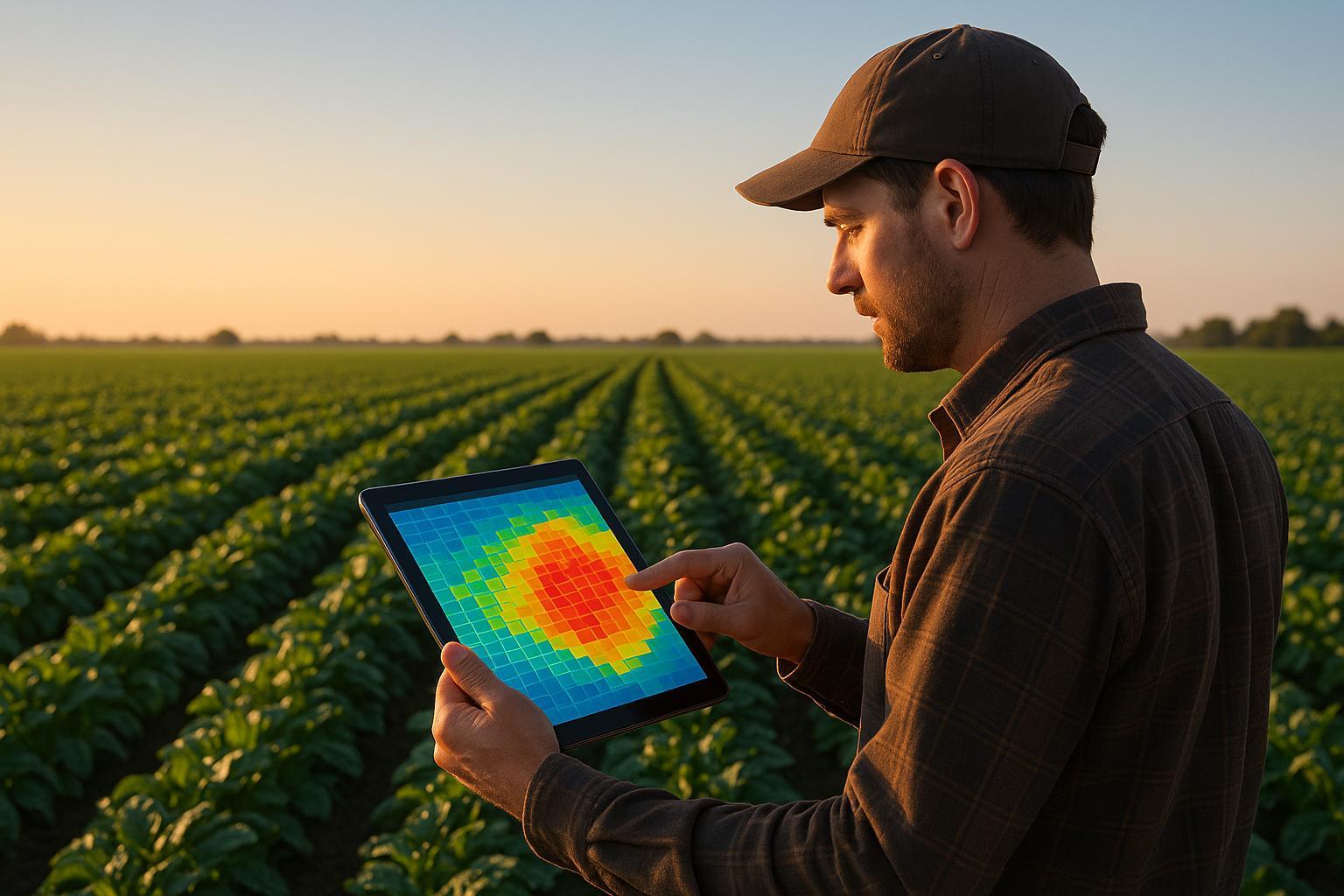
Growing Degree Days: AI's Role in Pest Control Timing
Explore how AI and Growing Degree Days enhance pest control timing, reducing pesticide use and increasing crop yields for sustainable agriculture.
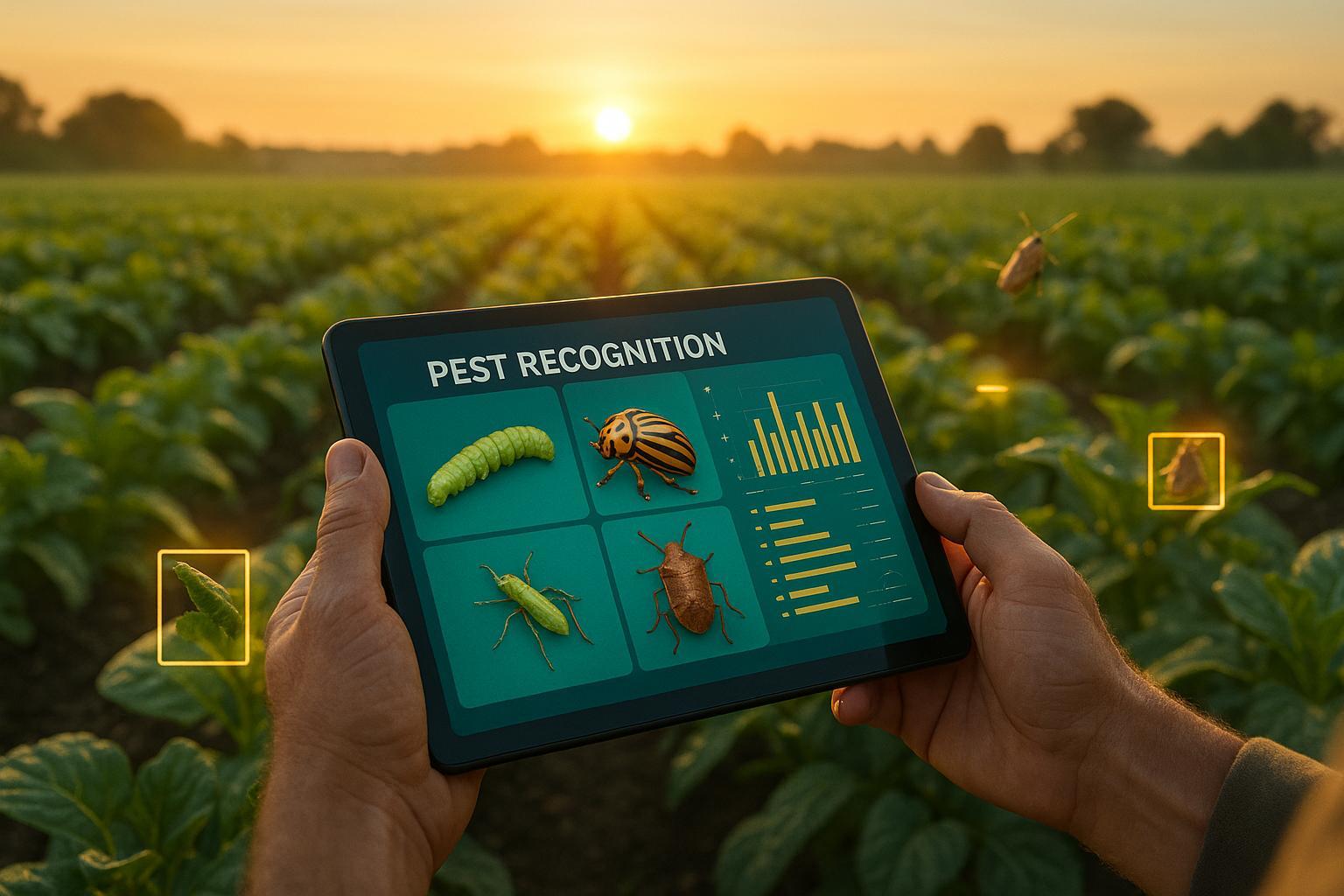
AI Datasets for Pest Recognition: Explained
Explore how AI datasets enhance pest recognition in agriculture, tackling challenges and leveraging synthetic data for improved crop management.
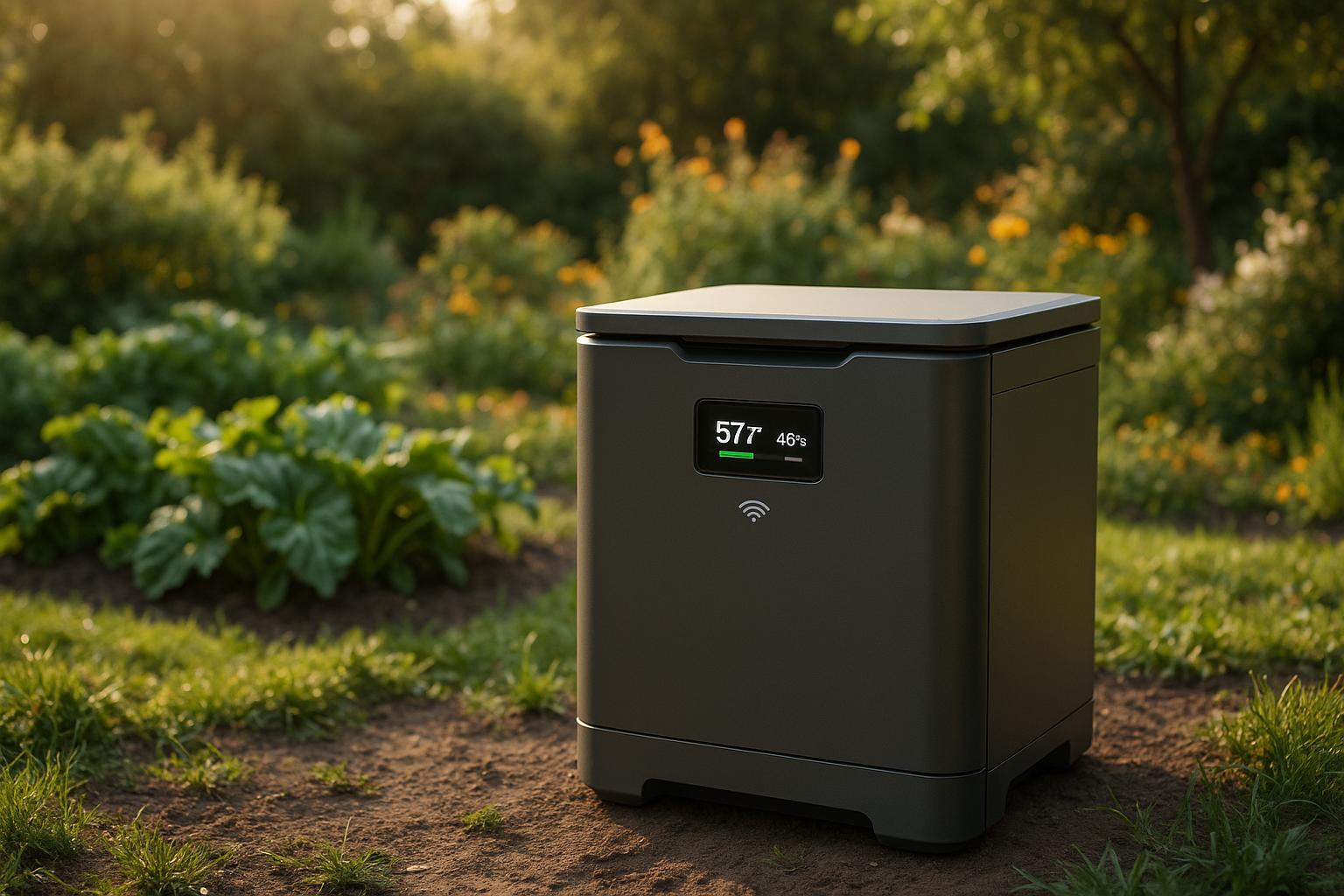
Ultimate Guide to IoT-Integrated Composting Systems
Explore how IoT-integrated composting systems automate monitoring to enhance compost quality, speed up the process, and reduce environmental impact.
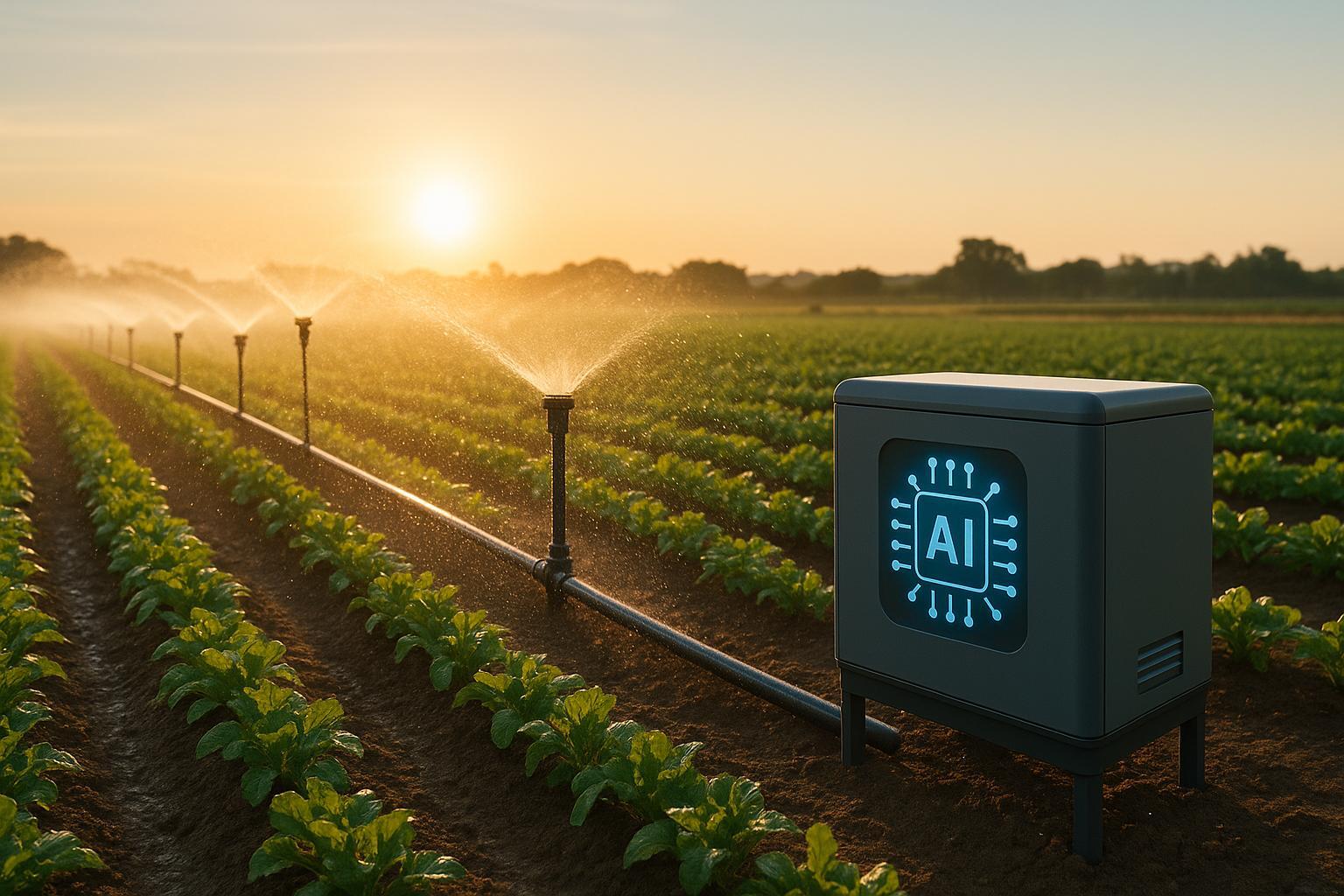
5 Common Irrigation Problems AI Solves
AI-powered irrigation systems tackle common issues like water waste and uneven distribution, promoting healthier plants and reducing costs.
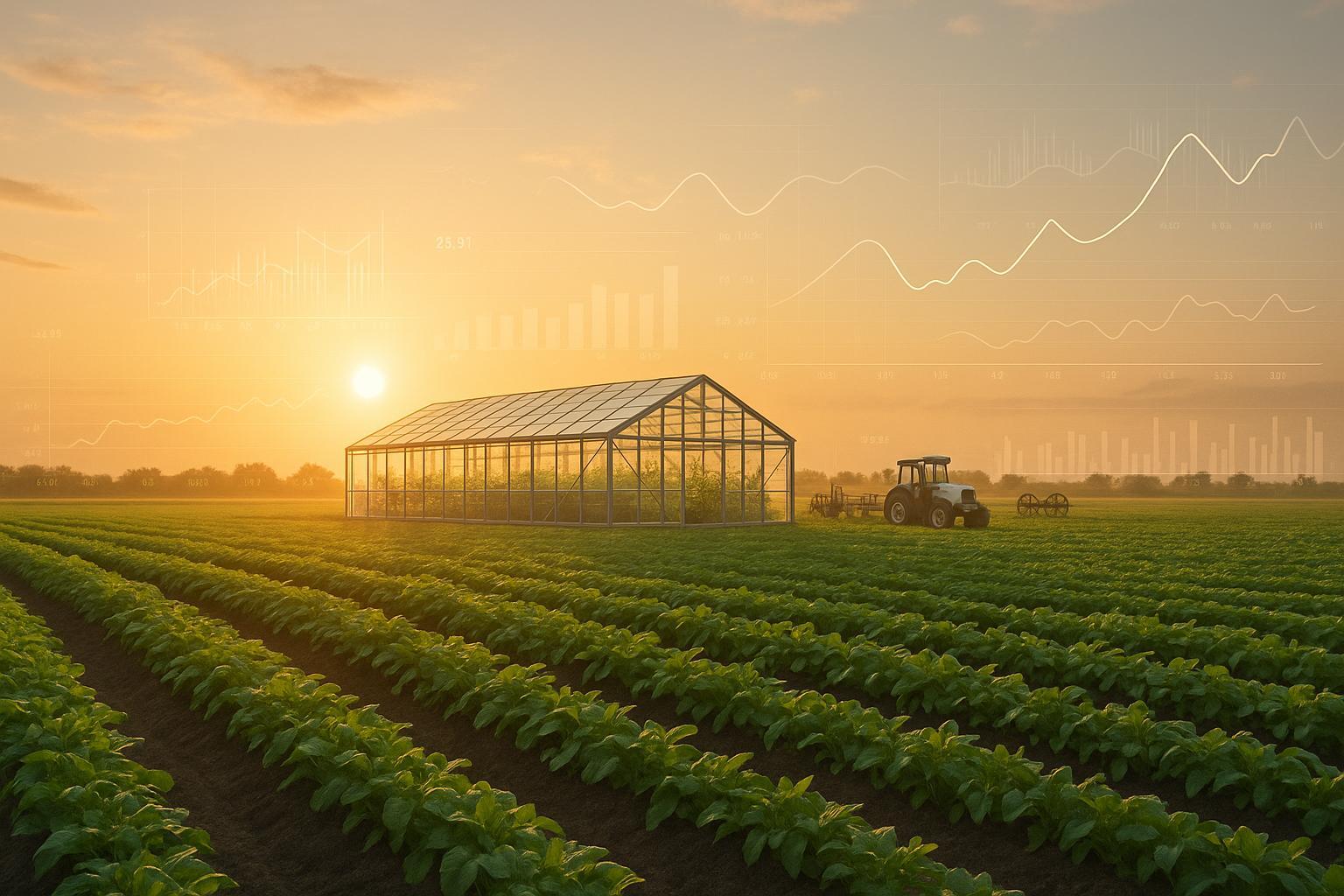
How Machine Learning Models Forecast Plant Growth
Explore how machine learning revolutionizes plant growth predictions, optimizing resources and improving yields for farmers and gardeners alike.
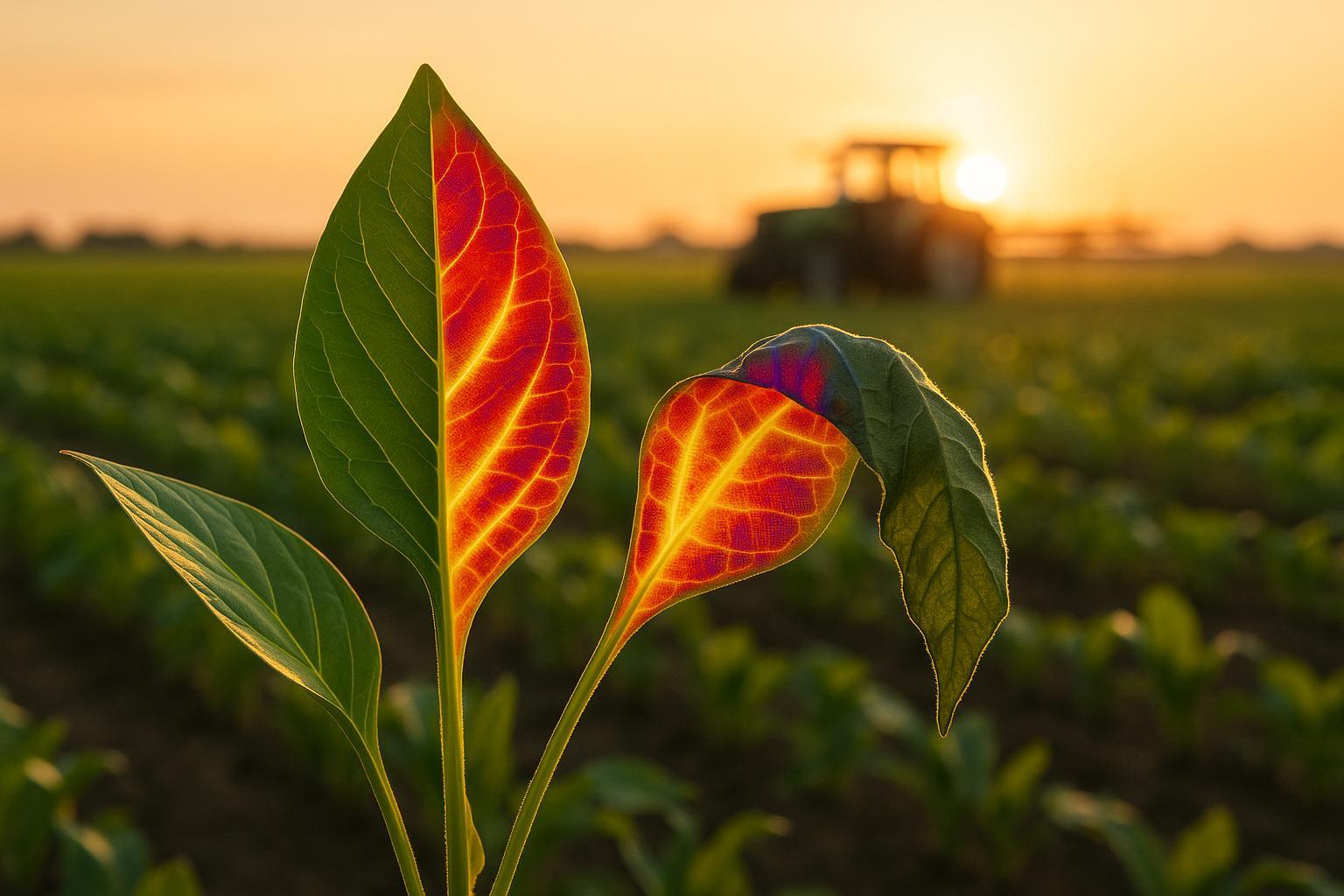
Infrared Imaging for AI Plant Stress Detection
Explore how infrared imaging and AI revolutionize plant stress detection, enabling early interventions and smarter farming practices.